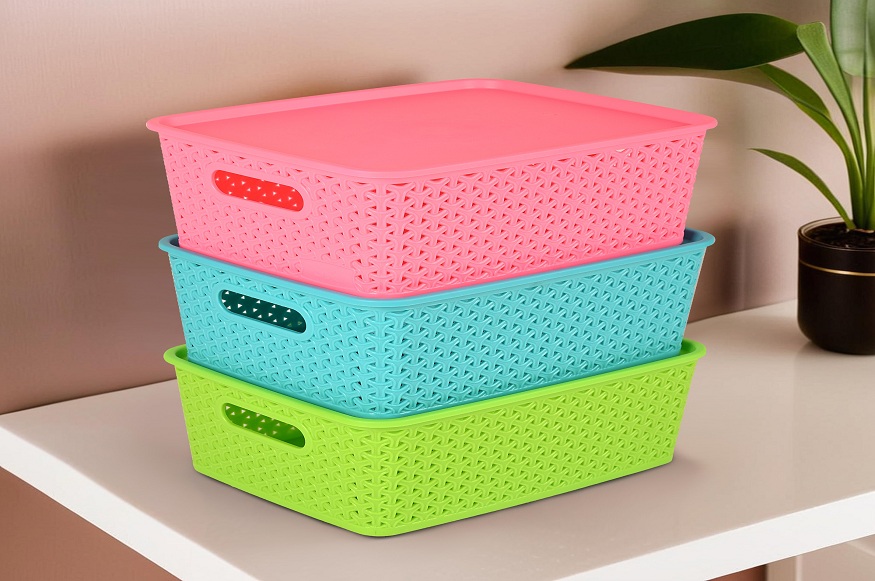Warehouses are the heart of supply chains, ensuring that products more efficiently from manufacturers to distributors, and finally to end customers. However, the effectiveness of any warehouse depends on how well goods are stored, organized, and retrieved. Even small inefficiencies can add up to massive costs over time. This is where plastic storage containers play a vital role, helping businesses reduce waste, improve organization, and maximize space. When combined with stackable storage containers, warehouses can transform chaotic environments into highly efficient, streamlined operations.
Why Plastic Storage Containers Are a Must for Warehouses
1.Heavy-Duty Durability
Warehouses often store goods in bulk, subjecting containers to repeated handling and transport. Plastic storage containers are designed to endure the rigors of forklifts, pallet jacks, and conveyor systems. Unlike cardboard or wooden crates that break down over time, these containers provide a long-lasting solution.
2. Moisture and Pest Resistance
Cardboard boxes can absorb moisture, warp, and attract pestsrisking damage to valuable products. Plastic storage containers protect against these issues, ensuring goods remain in optimal condition for longer periods.
3. Standardized Sizes
Uniformity is crucial in warehouses. Many plastic storage containers come in standardized dimensions, which make stacking easier and help with palletization. This reduces time wasted in loading and unloading, improving turnaround efficiency.
How Stackable Storage Containers Transform Space
Warehouses rely on maximizing available space. Stackable storage containers are designed to take advantage of vertical storage, making them indispensable in facilities where every square meter matters.
- Vertical Efficiency: By stacking containers, businesses optimize space without expanding the warehouse footprint.
- Clearer Aisles: More goods can be stored compactly, keeping walkways clear for staff and equipment.
- Scalability: As inventory grows, additional stackable storage containers can be integrated without the need for costly renovations or expansions.
- Safety: Secure stacking reduces the risk of boxes toppling over, which protects both workers and inventory.
Real-World Example
A Melbourne-based electronics distributor faced challenges with organizing small but high-value items like chargers, cables, and accessories. Initially, they used mismatched cardboard boxes, which led to frequent product losses, disorganization, and wasted time. By transitioning to plastic storage containers and adopting stackable storage containers with clear labelling systems, they reported:
- 25% improvement in inventory retrieval times.
- 20% reduction in product damage.
- A cleaner and safer work environment that improved employee morale.
This simple switch significantly improved the company’s bottom line.
Sustainability in Warehousing
Sustainability is a growing concern across industries. Many warehouses generate massive waste through disposable packaging. Switching to plastic storage containers reduces the need for single-use packaging, which helps lower landfill contributions. Additionally, stackable storage containers reduce reliance on additional shelving units, further minimizing material usage.
When warehouses adopt reusable and durable storage solutions, they align with corporate social responsibility goals and appeal to environmentally conscious clients.
Best Practices for Warehouse Implementation
- Introduce a Labelling System: Clearly label containers with barcodes or RFID tags to improve tracking.
- Colour-Code by Category: Assign different colours of plastic storage containers to specific product groups for easier identification.
- Train Staff: Educate warehouse staff on proper stacking methods to ensure safety.
- Regular Maintenance: Wash containers periodically to maintain hygiene and extend their lifespan.
- Rotate Stock: Implement “first-in, first-out” (FIFO) practices to keep products fresh and prevent waste.
Conclusion
Warehouses thrive on efficiency, and small changes in storage management can yield massive results. Plastic storage containers and stackable storage containers provide the durability, organization, and space-saving design needed to keep operations running smoothly. They not only protect valuable goods but also create safer and more efficient work environments.
As industries continue to grow and consumer expectations rise, warehouses that invest in smart storage solutions will have a competitive advantage. By adopting these containers, businesses can look forward to reduced costs, increased productivity, and long-term sustainability.

